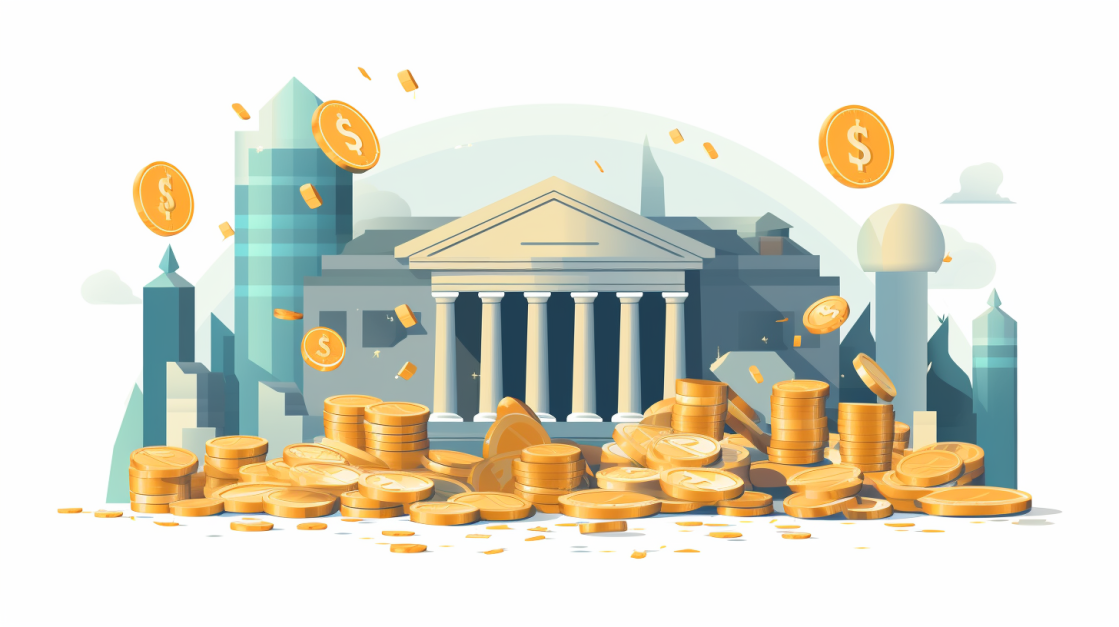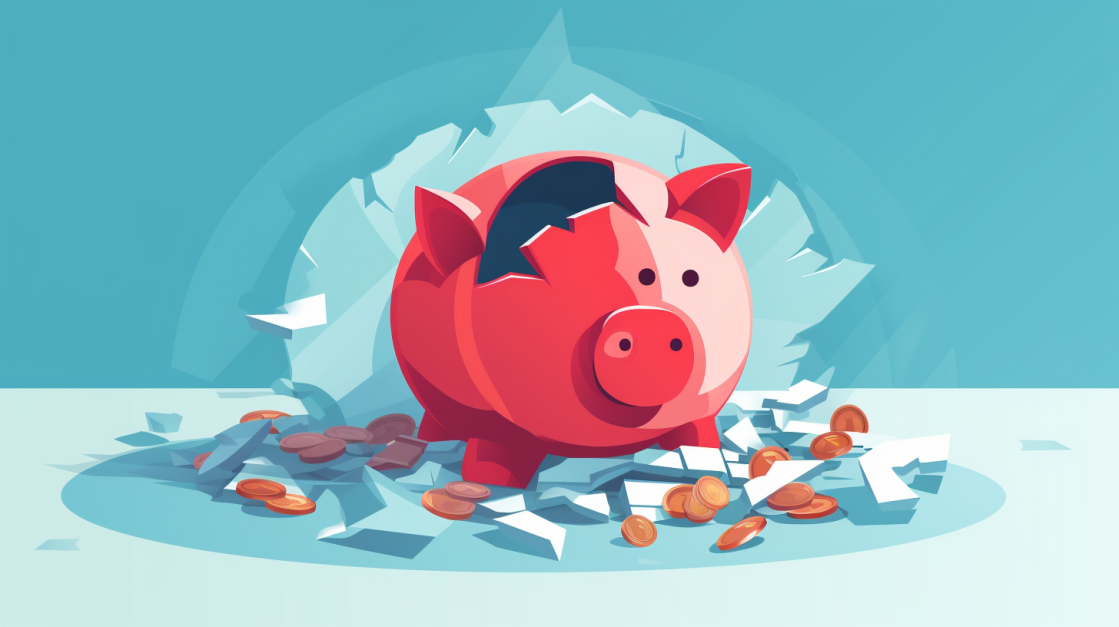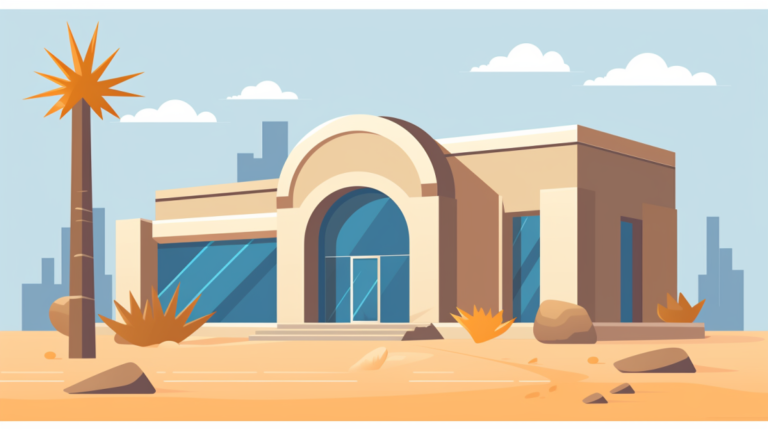How to Navigate Bank Fees

It doesn’t take much to realize that banks have a certain flair for coming up with bewildering arrays of fees. At times, it can feel like you need a magnifying glass and an advanced degree just to understand them on your statement! As someone who’s personally navigated this labyrinth of charges, I’ve taken the guesswork out by combing through these perplexing terms and decoding their related costs.
In this blog post, we’ll unmask common bank fees (as scary as they might seem) and share some savvy tactics to help keep them off your plate. Plus, we’ll chat about factors that matter when choosing your banking partner in order not to go broke while trying just keeping money safe.
Ready to hold onto more of the fruits of your labor? Come on in; let’s dive right into it!
Key Takeaways
- Banks can charge many fees like monthly service costs, overdraft charges and paper statement fees.
- You can stop these fees by setting up direct deposit from your job into your bank.
- Always use ATMs that belong to your bank to avoid extra costs.
- Sign up for overdraft protection at the bank. It will help if you spend more than what you have in the account.
- Cutting back on wire transfers or using online apps instead of banks for moving cash helps save money.
- Going digital with statements saves both money and trees!
Understanding Common Bank Fees

Common bank fees can be tricky to navigate, but knowing what they are is the first step. You might face monthly service charges just for having an account. Then there are overdraft fees that appear when you’ve spent beyond your balance or non-sufficient funds fines for bounced checks.
Don’t forget those sneaky out-of-network ATM costs and foreign transaction percentages incurred when shopping overseas. Excess transaction penalties come into play if you go over a set number of certain types of transactions in one month, while wire transfer and paper statement fees add up if you often conduct such operations.
Inactivity may incur counts too; keeping an unused account around too long could drain it slowly through such deductions! And finally, account closing assessments sometimes bite if you decide to shut down an account sooner than stipulated by the bank’s terms and conditions.
Monthly service fees
Your bank might charge monthly service fees. This fee links to your account and can be of different amounts. Some banks ask for a higher fee, others less. Banks use this cash for services you get by having an account there.
Sometimes, banks will not charge you if you keep a certain amount in your account at all times.
Overdraft fees
Overdraft fees can make you owe the bank more money. Banks charge this kind of fee when your checking account drops below zero. Let’s say you spend more than what is in your account.
The bank could let it slide but they will ask for an overdraft fee.
Options like ‘overdraft protection‘ can help avoid these costs. You may still have to pay, but some banks charge less for using overdraft protection rather than straight up overdraft fees.
Chasing Bank, Capital One Bank and Varo Bank do not even ask for a fee if you use their overdraft protection features.
Non-sufficient funds fees
Banks charge non-sufficient funds fees when your account can’t cover a cost. Let’s say you try to buy something but don’t have enough money in your bank account. The bank will say no to the deal and ask you for money.
This is what we call a non-sufficient funds fee. It also happens if an automatic payment goes off or if a check bounces because of little money in the account. To keep this from happening, think about using overdraft protection at banks like Chase Bank and Capital One Bank that do not charge for it.
Out-of-network ATM fees

Your bank may charge extra when you use an ATM not in their network. This cost is what we call “out-of-network ATM fees“. Some banks can take back these costs for you. Finding a bank with many ATMs that are easy to get to can help avoid this fee.
If you travel, using your debit card outside of the country may also have extra charges. These could be up to 3% of what you spend, plus another $3 if the ATM is out-of-network.
Foreign transaction fees
Using your debit card in a different country can cost you more. This is due to foreign transaction fees. Visa and Mastercard both take 1% of the money spent, as does your bank sometimes.
If you use an ATM not from your own bank, some banks might even add $3 plus 3% of the amount on top of that. So it’s best to think twice before swiping your card abroad!
Excess transaction fees
Excess transaction fees are tricky. Banks often charge these if you go over a set number of transactions in your account within one month. For instance, I once paid up to $30.83 for the same! So, it’s important to pay attention to how many times you move money or make payments from an account.
Most banks only allow a few free transactions each month. After that, they slap on extra charges with every deal made. This is common with savings and checking accounts where banks limit the cash flow per cycle so as not to disrupt their financial planning.
Always be aware of these limits and try not too make too many small transactions frequently.
Wire transfer fees
Banks charge a fee for wire transfers. This is money you pay to send cash from your account to another place. It can cost from $10 up to $50 per transfer. The cost depends on where the money goes.
Sending money within the U.S costs less than sending it overseas. It’s good to know this so you do not get surprised by fees when you need to move some funds quickly.
Paper statement fees
Banks can charge you for sending paper statements. This is a way they push us to go digital. The fee isn’t big, but every dollar counts! If you choose online reports instead of paper ones, you avoid this fee.
It’s also better for the environment to use less paper!
Inactivity fees
Banks may put inactivity fees on your account. This can happen if you let it sit too long without any moves like deposits or withdrawals. The bank sees this as snoozing, often after about six months of no action.
You treat your account like a piggy bank, not putting in or taking out money for quite some time. All of a sudden, you notice there are charges on your statement! Up to $20 per month could be lost just because the account has been quiet for too long.
Be active with your banking to keep these costs away.
Account closing fees

Some banks ask for money when you close an account too soon. They call this an “account closing fee“. It can cost up to $25. This happens if you opened the account not long ago. Some banks set a certain time frame for this rule, like 90 or 180 days after opening the account.
Be sure to check with your bank about their rules before starting a new account.
How to Avoid Common Bank Fees
There are several methods to sidestep common bank fees, such as setting up direct deposit and maintaining the required minimum balance. To learn more proactive ways to avoid annoying charges like overdraft fees or out-of-network ATM costs, dive into our detailed guide!
Setting Up Direct Deposit
I set up my direct deposit to avoid monthly fees. It was easy! Banks often remove fees when you have your paycheck sent right to them. Here’s how I did it:
- I got a direct deposit form from my job.
- The form asked for bank information like the name and address of the bank.
- I found my account number and bank’s routing number on a check.
- I gave the form back to my boss.
- My pay went straight into my bank account after that.
Maintaining the Required Minimum Balance
Keeping money in your bank account is key. It can help you dodge monthly fees. A lot of banks set a required minimum balance for an account. Falling below this balance can bring extra charges. Here are some things to keep in mind:
- Know the rules of your bank.
- Keep a safe limit above the required balance, just in case.
- Make a habit of checking your account regularly.
- Consider using alerts and notifications for keeping track.
- Open a no – fee account if you have trouble with maintaining balances.
- Look at online banks or credit unions for lower minimum balances.
Using Your Bank’s ATMs

I save money by using my bank’s ATMs. Here is why:
- I dodge extra fees. Costs build up fast when using other banks’ machines.
- Some banks pay you back for ATM charges. So, I pay nothing in the end.
- When out of the country, too many fees add up fast. By opting for my bank’s ATMs, I cut out those pesky costs.
- Even if a fee gets charged, some banks will cover that added cost.
- It’s best not to gamble with unfamiliar machines abroad. My bank’s ATMs are a safe bet and help me avoid foreign fees.
- Thankfully, many banks offer a lot of ATM choices.
- And even better — some good banks won’t charge if I end up using another machine.
Tracking Your Spending Habits
I keep a close eye on my spending habits to avoid bank fees. Here’s how I do it:
- I write down all my spending in a notebook. This way, I know where my money goes.
- I check my bank account online every day. This helps me catch any errors.
- I use a budget app on my phone. It helps me stay within my spending limits.
- When buying something, I think about what I have spent so far.
- If there is a surprise fee, I call the bank right away to clear it up.
- For bills and other large spends, I plan ahead so there are no last-minute shocks.
- Each month, I assess what went well and where mistakes were made.
Signing Up for Overdraft Protection
I always sign up for overdraft protection on my account. It keeps me from spending more than what I have in the bank. Overdraft fees can be high if you go over your balance. Here are some good points about overdraft protection:
- It stops me from paying overdraft fees.
- Many banks have it as an option.
- Some banks like Chase, Capital One, and Varo don’t charge fees to use it.
- It is easy to sign up for this service at a bank.
- I feel safer knowing the bank has my back if I make a mistake with my money.
Enrolling in Paperless Statements
Going paperless with your bank statements is a smart move. Here are some reasons why:
- You can cut down on clutter.
- It’s better for the environment.
- You have fast access to your statement.
- There’s no need to wait for mail delivery.
- Banks like it when you go paperless. Some even give rewards or perks for doing this.
- Paperless statements save you money on bank fees, as stated in fact number 5 above.
- Losing a paper statement is a risk of identity theft, but not with digital ones.
Avoiding Unnecessary Wire Transfers
Cutting back on wire transfers helps me save money. Banks often charge fees for this service. Here’s how I avoid those costs:
- I use online apps instead of bank transfers. Tools like Zelle or Venmo offer free transfer services.
- I keep money in my bank account. It stops me from needing to transfer cash from other places.
- Paying bills directly from my account keeps balance high and skips transfer costs.
- Setting up alerts tells me when my balance is low, so I don’t need a surprise wire transfer.
- Planning is key! Knowing when big costs come lets me move money ahead of time.
- For loans and bills, I set up auto payments if it’s a choice.
- Keeping an emergency fund in my account means no need for urgent wire transfers.
Setting Up Alerts and Notifications
We can use bank alerts and notifications for safety. They let us know when our money hits a certain low point.
- I sign in to my bank account online or through an app.
- I find the menu option for alerts or notifications.
- I choose to add a new alert.
- I set up the alert to tell me when my balance gets low. I choose the amount that is right for me.
- When my account hits this chosen amount, my bank will send me an email or text message.
The Impact of Bank Fees on Your Budget

Bank fees can eat into your money fast. Just think about it – a $5 monthly service fee adds up to $60 in a year. If you add other charges, like ATM and overdraft fees, the cost grows even more.
This means less cash in your pocket for important things. A single overdraft fee could take food off your table for a week!
The worst part is how bank fees sneak up on you when you least expect it. One day, everything seems fine with your budget. The next day, bank charges send it crashing down! You deserve better than these nasty surprises.
To keep this from happening, I track my spending closely at all times. That way, I know where every dollar goes and stay one step ahead of those pesky fees.
Considerations When Choosing a Bank
When choosing a bank, consider its fee structures—they should be transparent and affordable. The bank’s convenience and accessibility matter—think digital banking options, ATM availability, branch locations.
Additionally, customer service is key—an efficient support system can turn complicated financial situations into manageable ones.
Fee structures
Let me tell you, understanding the fee structures of different banks is crucial when choosing where to open an account. This can significantly impact the cost of maintaining your account and your overall banking experience. Here’s a brief overview of various fee structures you might encounter.
| Fee Type | Description | Typical Cost |
|---|---|---|
| Monthly service fees | Charged monthly for account maintenance | Varies by bank, often waived with minimum balance or direct deposit |
| Overdraft fees | Charged when account balance goes below zero | Typically around $35 per item |
| Non-sufficient funds fees | Charged when a transaction is denied due to insufficient funds | Similar to overdraft fees, typically around $35 |
| Out-of-network ATM fees | Charged when using an ATM outside of the bank’s network | Around $2-$5 per transaction |
| Foreign transaction fees | Charged for using a debit card outside of the United States | Typically around 3% of the transaction amount |
| Overdraft protection fees | Charged for using overdraft protection | Often less than the overdraft fee itself |
It’s essential to read the fine print and ask questions about any fees you don’t understand. Knowing the fee structure can help you avoid unnecessary charges and choose the best banking option for you.
Convenience and accessibility
Banks can be found many places. Some people like using banks that have lots of buildings close by. Others don’t care about a bank being near them, they do all their banking online.
Also, some banks make it easy to use ATMs far from home without extra fees. Choosing the right bank for you is about what makes banking both handy and simple in your daily life.
Customer service
Good customer service from banks makes a big difference. It is key to solving issues and understanding bank fees. A friendly human voice on the phone can ease stress. It helps to have someone explain things in plain language especially when there are problems with your account.
Always pick a bank with top-notch customer service. It’s one more way to cut down on banking headaches.
Conclusion

Bank fees can be a pain, but they are not hard to manage. With the right moves, you will find that it’s easy to skip many bank fees. Remember, choose your bank carefully and keep an eye on your money.
So go ahead, take control and say goodbye to surprise fees!
FAQs
1. What is a bank maintenance fee?
A bank maintenance fee is money you pay to the bank for keeping your account open and using their services.
2. Can I avoid paying Bank of America’s Advantage Plus Banking® account fees?
Yes, ways to avoid fees include having no-fee accounts or meeting certain account requirements like maintaining an average credit score or balance.
3. Are there costs for using ATMs that are not part of my bank’s network?
Using ATMs outside your bank’s network may lead to extra charges known as ATM usage fees.
4. Do all banks charge similar lost debit card fees?
No, different banks have differing policies affecting lost debit card costs, so it helps looking at various banking guides and reviews on financial sites like Bankrate before deciding.
5. Can financial advisors help with navigating escalating bank fees?
Yes, advisors from reliable firms such as Pathfinder Planning and Cultivate Financial Planning can provide insights on dealing with increasing banking costs including early withdrawal penalties and closeout fees.
6.What options do I have if I don’t want traditional transfers due to high rates?
If regular in-house transfer comes across as pricey for you because of its higher rates; making transactions through ACH (Automated Clearing House Network), might be cost-effective and efficient route for moving funds around different institutions without getting burdened by heavy charges.






